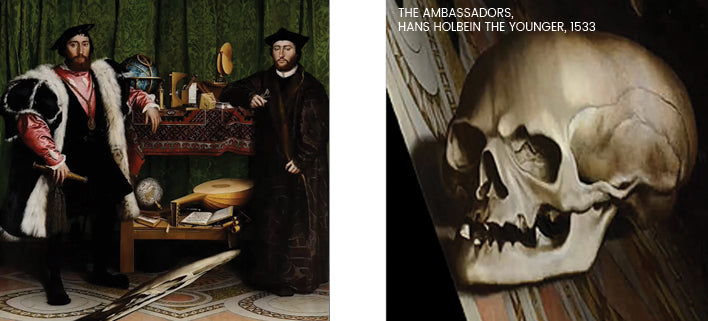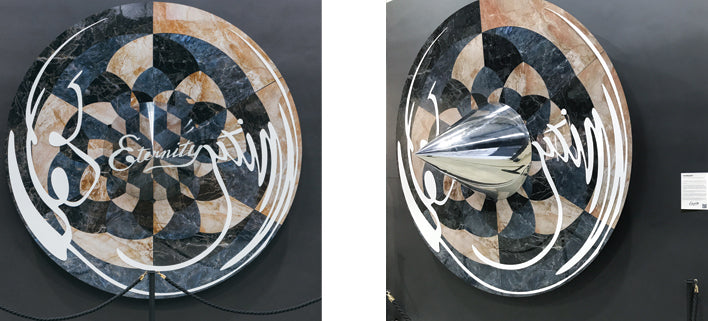Installation Didactic
The Ambassadors in 1533
We are not the first to ask these questions. Hans Holbein the Younger
painted The Ambassadors in 1533. At the base of the painting is a dark smudge, an incomprehensible blemish it would seem but standing in just the right spot, looking from the perfect vantage point we would see a skull emerging from the painting. The skull is a perspectival anamorph a distorted image revealed only through the foreshortening of perspective created by our viewing.

The word anamorph is derived from the Greek prefix -ana meaning ‘again’ and the word morphe meaning shape or form – literally again-form or to shape again, or perhaps to REGENERATE.
What more perfect theme could we be given after all we’ve been through. How can we reflect on this recent past and see a new future? Can we hope to be reborn?

Here, we placed a mirrored cone on the contorted Kaolin tiles, the reflection in the mirror reveals an undistorted checkerboard, this anamorph is called a conical catoptric or mirrored anamorph. But in this mirror is something else what seems like a white streak across the tile is regenerated as the word Eternity in the conical mirror.
For more on the conceptual journey of ARM Architecture watch the video.

